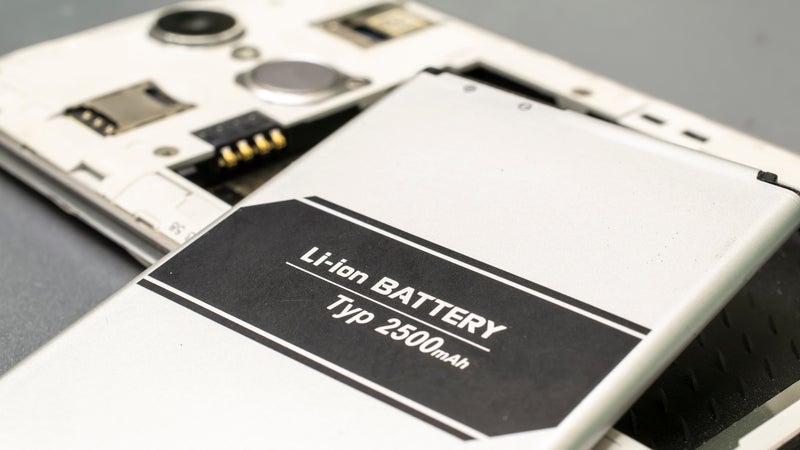We all know that after a couple of years phones mysteriously seem to last for shorter and shorter periods between charging. Katie Rosseinsky speaks to a tech expert to figure out all the secrets to making your phone battery stay as long lasting as possible. Charging your phone is a mundane fixture of modern life. Most of us probably plug in our devices just after we’ve brushed our teeth at night, filling them up to 100 per cent, readying them for another day of social-media scrolling and app-based procrastination. It’s part of our routine, something we don’t really think about – until it becomes a problem, that is.
![[Keeping your phone's charge in the mid-range is best for battery life long term]](https://static.independent.co.uk/2025/02/13/16/38/iStock-1409737619.jpg)
There tends to come a point in your phone’s lifespan when it starts greedily eating up its charge with an insatiable appetite. Once you could get through the working day without dropping into the red zone, battery-wise, but now you’re constantly scoping out potential charging points so you can top up on the go. As someone who has never been fussed about gadgets, I clung on to the last phone I owned for around four and a half years. By the end, I couldn’t leave the house without a chaotic array of power banks, wires and adaptors. The most frustrating part? Woeful battery life aside, this ancient artefact was actually functioning pretty well (although, I will admit, the photos it took were rudimentary at best).
I’d like to hold on to my current phone for as long as possible, and I’m guessing that, in a cost of living crisis, you might well do, too. So is there any way that we can stop this annoying process of decline from playing out again (or at least slow it down a bit)? In order to answer that, we need to look closer at our charging routine – and ask whether we might inadvertently be hastening the demise of our own devices.
First up, a quick science refresher. Your mobile phone uses a lithium-ion battery; so does your laptop, tablet and electric toothbrush. Swapped to a rechargeable vape recently? That will run off a lithium-ion battery too. Drive an electric vehicle? There’s a high chance your car uses the same technology. Are you, for some unfathomable reason, the proud owner of a hoverboard? You can probably guess by now exactly what powers your weird device.
Lithium-ion technology emerged in the Seventies and started to become an integral part of portable tech (think handheld camcorders – remember them?) in the Nineties, thanks to their high energy density. Essentially, they can pack a large amount of energy into a small space, charge quickly and last longer than other battery types. But although lithium-ion technology might trounce other battery types when it comes to long life, that doesn’t mean it is infallible. Far from it. Your phone’s battery life certainly does get worse as the years go on, “due to internal electrochemical wear and tear”, Unnikrishnan says. The chemical reactions that power these batteries also cause them to slowly degrade over time – essentially, they’re on the decline from the very first time you use them (don’t think about this too deeply if you’re already prone to existential crises). Typically, they last around 500 charge cycles, or between two to three years, before their capacity takes a nosedive.
In 2023, however, the European Union introduced a new rule. From 2027, it will require manufacturers to ensure that customers can “easily remove and replace” batteries in smartphones, tablets and other electronics, without any specialist skills or tools. It’s a callback to those halcyon days when the chunky battery of your Nokia 3310 used to slide in and out with ease. The idea is that fewer devices will end up being chucked in landfill as a result – and the regulation will mean that phone companies will have to seriously rethink the design of any products they’re selling in the EU.
Before that, though, what can we do to eke out our battery life for as long as possible? The first thing you need to do is to stop obsessing over filling up your phone to full capacity. Many of us will feel the urge to keep it topped up to 100 per cent whenever possible. I’m certainly guilty of leaving mine plugged in when it’s long been all charged up, just in case. But although this “more is better” approach might alleviate our short term worries about our devices giving up while we’re out and about, it’s not the best for the battery in the long term.
Maintaining the battery charge between 20 per cent and 80 per cent is more beneficial for battery cycle life. That’s because “lithium-ion batteries experience increased stress when [they are] maintained at full charge for prolonged periods”, Unnikrishnan says. Keeping it at the 100 per cent mark just places it under extra, unnecessary strain that will hasten its downfall. Instead, “maintaining the battery charge between 20 per cent and 80 per cent is more beneficial for battery cycle life”. For this reason, Unnikrishnan recommends plugging in your phone during the day rather than overnight, as “you can monitor its charge level and unplug it before it reaches full capacity”. Think Goldilocks – not too empty, not too full, just right. Congratulations if you have the mental resilience to keep your charge on the lower end of that spectrum. The mere thought is making me anxious.




























.jpeg?trim=296,234,267,215&quality=75&auto=webp&width=960)


